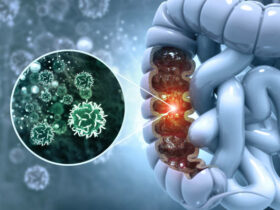In 1996, Doug Olson learned he had chronic lymphocytic leukemia (CLL), a type of cancer that starts in white blood cells. This cancer often grows slowly, so his doctor decided to watch it and wait to treat him.
But when Olson’s cancer started to grow a few years later, he had several rounds of chemotherapy. Then, in 2009, the tumor changed. Chemo no longer helped. Olson’s doctor, David Porter, MD, recommended a bone marrow transplant. But none of Olson’s siblings was a good match.
“It seemed like the news kept getting worse,” Olson says.
Then Olson’s doctor suggested a clinical trial for a new kind of cancer treatment. Specifically, it was a type of immunotherapy called CAR T-cell therapy. The aim: Re-engineer Olson’s immune cells in the lab to turn them into weapons to hunt down cancer cells.
CAR T-cell therapy may work when other treatments haven’t. And unlike chemo and radiation, which kill healthy cells as well as cancerous ones, immunotherapy targets the tumors with more precision.
CAR T-cell therapy, or CAR T, is one of a few types of immunotherapy. Each one works in a different way.
Doctors may turn to CAR T when T cells, which normally patrol the bloodstream to spot germs and other invaders, can’t recognize cancer as a foreign cell. That happens if the T cells lack the specific proteins that can bind to the tumor in order to attack.
It’s as if “the cancer cell has a piece of Velcro, but the patient’s T cells don’t have the corresponding piece of Velcro to make it stick,” says Porter, who is director of the Cell Therapy and Transplant Program at the University of Pennsylvania.
During CAR T-cell therapy, doctors first remove T cells from your body. Then they add a gene that makes the T cells produce special proteins called CARs (chimeric antigen receptors) on their surface, which can stick to the cancer cells. After the CAR T cells multiply in the lab, doctors put them back into your body.
The reengineered T cells “have been educated to recognize and kill the tumor cells,” says Renier Brentjens, MD, PhD, professor of medicine and director of the Cell Therapy Service at Memorial Sloan Kettering Cancer Center.
Not only that, the T cells “expand by 1,000- to 10,000-fold in the body. And every one of those cells can go on to kill more cancer cells,” Porter says.
Olson received three doses of CAR T cells. After a couple of weeks, almost 20% of his white blood cells were CAR T. When he returned to Porter for tests, “he told me they couldn’t find a single cancer cell in my body,” Olson recalls.
The FDA approved the first CAR T-cell therapy in 2017. To date, the agency has approved two CAR T-cell therapies for cancer.
Axicabtagene ciloleucel (Yescarta). This is approved for B-cell lymphoma in adults that hasn’t responded to other treatments or has come back after treatment.
Tisagenlecleucel (Kymriah). This has the same approval as axicabtagene ciloleucel, but it also can be used to treat children and young adults with acute lymphoblastic leukemia.
In studies, 9 out of 10 people with acute lymphoblastic leukemia whose cancer didn’t respond to other treatments or whose cancer came back had full remission with CAR T-cell therapy. Remission means the cancer can’t be found in tests.
A significant proportion of patients treated with these CAR T-cells will be long-term survivors.
Renier Brentjens, MD, PhD
Complete remission rates for chronic lymphocytic leukemia and non-Hodgkin’s lymphoma are lower — 35% to 70%. Of that number, about a third have long-lasting remissions. “For those people it absolutely lives up to the promise,” Porter says.
But the catch is that remissions aren’t always permanent, Brentjens says. In many cases, doctors don’t know why the cancer returns. It could be that CAR T cells may not last long in the body. Or they may eventually get overtaken by a group of T cells that don’t have the protein that can chase down the cancer.
You won’t have hair loss that commonly follows chemotherapy. Instead, CAR T-cell therapy can lead to a short-lived but severe reaction called cytokine release syndrome, or CRS.
“It is similar to having a horrible case of the flu,” says Terry Fry, MD, a cancer researcher and professor at Children’s Hospital Colorado.
Cytokines are proteins that immune cells release when they attack an infection. Symptoms include a high fever, nausea, chills, headache, rash, and trouble breathing. CRS can be deadly, but it’s treatable in a hospital.
CAR T-cell therapy also can affect the brain, causing confusion, trouble speaking, and sometimes seizures. Usually, Fry says, those symptoms happen within in a couple of weeks after the infusion and get better in about a month.
It’s been less than a decade since the first person received CAR T-cell therapy. So doctors still don’t know about any long-term risks.
CAR T-cell therapy works for blood cancers. But so far, it hasn’t been able to treat solid tumors like breast or lung cancer.
Leukemia and lymphoma cells are easier to hunt down because the targeted protein is on the surface, and because they’re not on healthy cells.
Fry says “solid tumors are a tougher nut to crack” because it’s harder to distinguish between targeted proteins that are on cancer tumors and those on healthy tissue.
Brentjens is one of the researchers who is looking at ways to get around this and other hurdles.
“I’m an optimist, so I would say in the next 5 to 10 years we might have some CAR T cells that might be able to target some solid tumors,” he says. “But this is still very much a work in progress.”
Although there is still work to be done, CAR T-cell therapy has been a lifesaving treatment for many of the people who’ve received it. “A significant proportion of patients treated with these CAR T cells will be long-term survivors. And the patients we’re treating are the ones whose survival expectation was slim to none,” Brentjens says.
NEWSLETTER
Get WebMD’s free Cancer newsletter
- Expert insights for every stage of the journey: Sign Up Now
Source link: https://www.webmd.com/cancer/features/car-t-gene-therapy-risks-benefits?src=RSS_PUBLIC by at www.webmd.com











